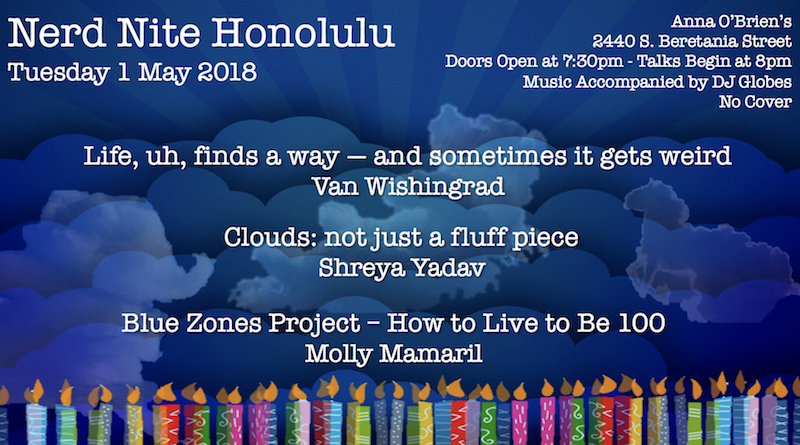***
Van Wishingrad, PhD Candidate in Landscape Genetics, Department of Biology, UH Mānoa
Life, uh, finds a way—and sometimes it gets weird.
Life is an interesting and strange phenomenon, and organisms have come up with a whole bunch of fascinating—and sometimes bizarre—ways to pass on their genes on to the next generation. From penis fencing to exploding testicles, sex can get dangerous—which might explain why some species have given up on sex altogether for the past 80 million years.
***
Molly Mamaril, Blue Zones Project Engagement Lead in the 4M region
Blue Zones Project – How to Live to Be 100
Inspired by National Geographic longevity research, the Blue Zones Project is being launched in the Mānoa-Makiki-Mōʻiliʻili-McCully region this spring. Blue Zones Project is a health and well-being initiative sponsored locally by the Hawai’i Medical Services Association. In the early 2000s, a National Geographic team traveled to Blue Zones regions around the world where people were living to age 100+ at extremely high rates. These clusters of healthy centenarians were discovered in Okinawa, Italy, Costa Rica, Greece and Loma Linda, California. By observing their habits, researchers created a simple framework of longevity: the Power 9 principles. The Power 9 are the foundation of the Blue Zones Project which has been implemented in over 40 communities across the U.S., eight of which are here in Hawai’i. Through 2020, our team, alongside residents and business owners will be focused on implementing small, but purposeful nudges to make the healthy choice, the easy choice here in our neighborhood.
Molly Mamaril serves as the Blue Zones Project Engagement Lead in the 4M region, which comprises of Mānoa, Makiki, Mōʻiliʻili and McCully. She was born in Hawaiʻi, grew up in Minnesota, and came back to Honolulu to pursue her Master’s degree in Natural Resources Management at UH Mānoa. She enjoys mālama ‘āina conservation work, hiking and teaching yoga.
